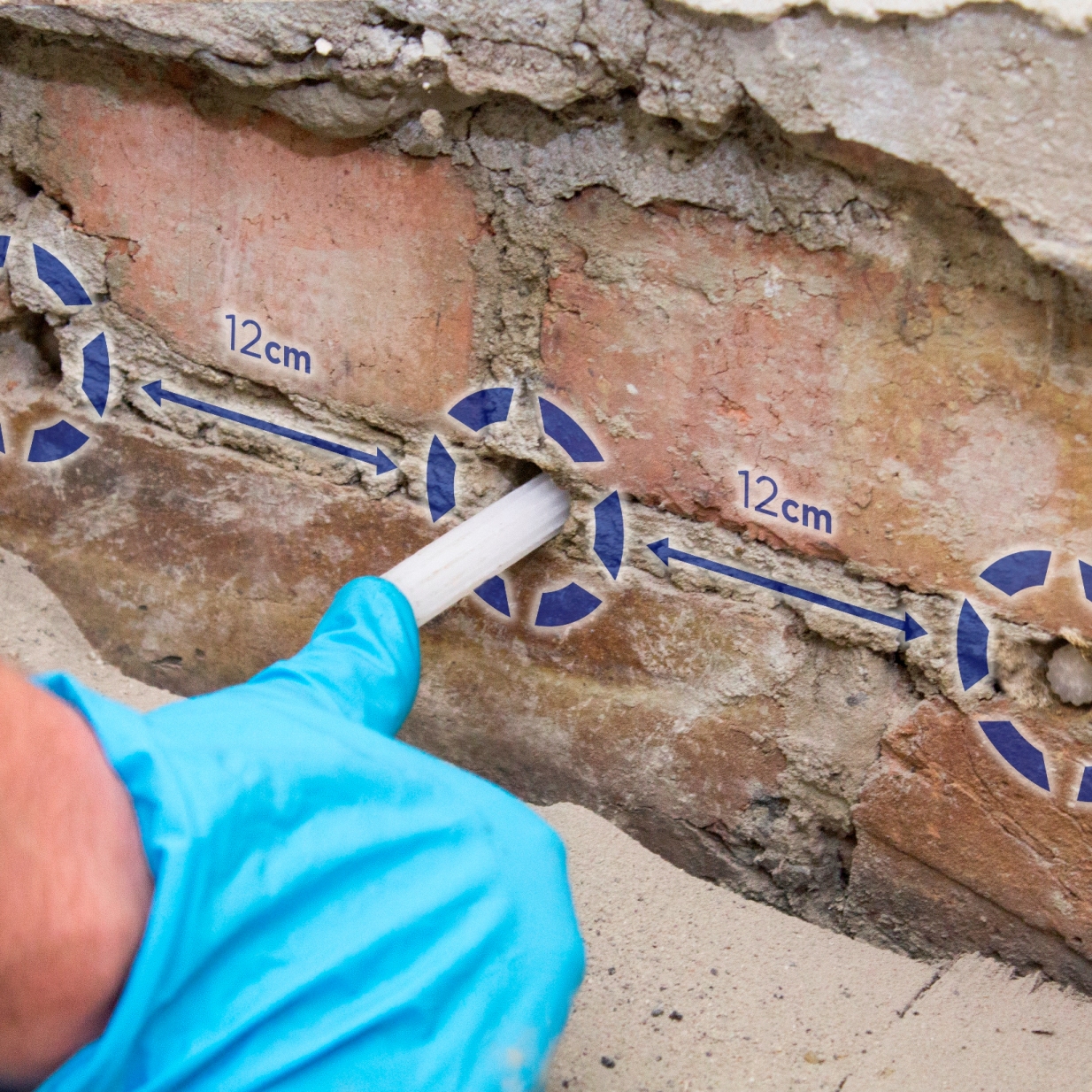The innovative Dryrod damp-proofing rods from Safeguard Europe – the UK’s leading specialist in damp-proofing and waterproofing technology – have been accredited by the German WTA organisation for creating remedial damp-proof courses (DPCs) against capillary absorption in masonry, otherwise known in the UK as rising damp.

The WTA, which translates into English as the Scientific and Technical Work Group for Building Conservation and Preservation of Monuments*, was founded in 1977 and carries out research, testing and approval of technical practices and materials throughout Europe.
The WTA accreditation is a perfect accompaniment to Dryrod’s British Board of Agrément (BBA) certification, awarded in 2015, which establishes that it is effective against the ingress of moisture for at least 20 years.
Dryrod was launched in 2014 and is designed to be the fastest, cleanest, easiest and most effective rising damp treatment on the market. It is a synthetic rod made from advanced polymers that is impregnated with a silane/siloxane material so that it forms a DPC in brick, coursed stone, rubble infill and cavity walls.
It has radically changed the way specifiers and contractors approach DPC installation, as it guarantees correct damp-proofing delivery each and every time. The standard 180mm long rods are simply inserted into 12mm drilled holes at 120mm centres along continuous horizontal mortar lines.
Not only does this method ensure deep penetration, but it also delivers the exact dose in each hole without the spillage and mess which occurs with other methods of installation. Any thickness of wall can be treated because the rods can be inserted end-to-end or trimmed back, depending on the wall thickness.
Unlike any other product on the market, the rods can also be installed effectively in highly saturated walls that are very porous and either highly alkaline – such as in new mortar – or with low alkalinity (old mortar). The rods are also effective when installed in warm or cold walls – even if the wall is freezing.
Heritage sites will also appreciate that the treatment can be invisible because rods can be removed from the mortar after six months when their active ingredient has dispersed into the surrounding masonry. Then the drill holes can be hidden by repointing with colour matched mortar.
Backed by Safeguard Europe’s comprehensive technical support, Dryrod is supplied complete with all information needed for a successful installation. This includes the number and depth of drill holes required for various wall thicknesses and types, together with suggested drilling patterns to treat stretcher bond and Flemish bond brickwork and irregular stone.
www.dryrods.com
*Wissenschaftlich-Technische Arbeitsgemeinschaft für Bauwerkserhaltung und Denkmalpflege